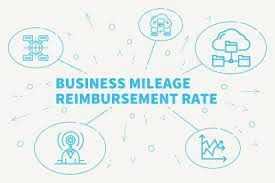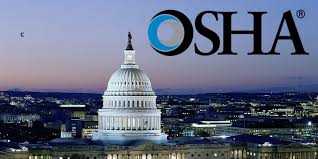JAN 2024, Vol 21, Issue 1
Overview
- 2024 Minimum Wage Increases
- NLRB’s “Quickie” Election Rule Takes Place
- EEO-1 Failure to File Deadline
- IRS Boosts Mileage Rate for 2024
- OSHA Requires More Employers to Submit Data
- The Latest HSA Trend: Automatic Enrollments
- Time to Update Your AAPs
2024 Minimum Wage Increases
Local State Changes Effective 1/1/24:
- Delaware- $13.25
- Maryland- $15.00 (varies by geographical location)
- New Jersey- $15.13 (for businesses with 6 or more employees) $13.73 (for businesses with fewer than 6 and seasonal employees)
- Pennsylvania- $7.25
- Washington, DC- $17.00
- - - -
NLRB’s “Quickie” Election Rule Takes Place
The National Labor Relations Board (NLRB) issued a final rule on August 24, 2023 requiring union elections to be held at “the earliest date practicable.” The rule, which took effect on December 26, 2023, also provides that disputes concerning individuals’ eligibility to vote in a union election do not need to be litigated or resolved prior to an election.
- - - -
EEO-1 Failure to File Deadline
The published deadline to submit and certify the 2022 EEO-1 Component 1 report was December 5, 2023. Employers that did not submit and certify their mandatory 2022 EEO-1 Component 1 report by that date must submit and certify their report as soon as possible, and no later than January 9, 2024.
- - - -
IRS Boosts Mileage Rate for 2024
The IRS is raising the standard mileage rate by 1.5 cents per mile for 2024. The business standard reimbursement rate per mile is rising to 67 cents, up from 65.5 cents for 2023, beginning January 1, 2024.
In addition to the 67 cents per mile driven for business use, the IRS also announced the standard mileage rate for 2024 will be:
- 21 cents per mile driven for medical or moving purposes for qualified active-duty members of the Armed Forces—a decrease of 1 cent from 2023.
- 14 cents per mile driven in service of charitable organizations. The rate is set by statute and remains unchanged from 2023.
The standard mileage rate is used to compute the costs that are deductible by businesses and self-employed individuals for operating an automobile for business use, as an alternative to tracking actual costs. Employers often use the standard mileage rate to pay tax-free reimbursements to employees who use their own vehicles for business.
- - - -
OSHA Requires More Employers to Submit Data
More employers will be required to submit workplace injury and illness information under a final rule released by the U.S. Occupational Safety and Health Administration (OSHA) on July 17, 2023. The new rule will take effect on January 1, 2024. OSHA is amending its regulations to require certain companies to electronically report work-related injury and illness data. See the attached OSHA Fact Sheet above for more information.
- - - -
The Latest HSA Trend: Automatic Enrollments
By Kathryn Mayer
Health savings accounts (HSAs) are a growing workplace trend, with more employees socking away money into the savings accounts and more employers promoting them to workers as a way to funnel away tax-free money for health care expenses.
Now the latest momentum for these savings vehicles comes in the form of employers automatically enrolling eligible employees into the account.
Nearly half (46.7 percent) of organizations report they automatically enroll eligible employees in an HSA, according to the Plan Sponsor Council of America's (PSCA) 5th annual HSA survey of more than 500 employers. That's up by more than 30 percent in just two years.
Meanwhile, the number of employers using a default or suggested savings rate to encourage greater account funding has also increased (11 percent of respondents, up from 9 percent last year and 8 percent the year before).
Many industry experts have long touted the HSA as a smart savings vehicle due to its triple tax advantage: Contributions are made pre-tax, the money in the accounts grows tax free, and withdrawals for qualified medical expenses are tax free.
Proponents also say HSAs can promote better health care decisions and encourage workers to seek more regular care.
High Health Care Costs: The big jump in automatic HSA enrollment is likely primarily due to employers understanding the reality of high health care costs and their effect on employees.
Health care costs inflated at a rate of approximately 4.5 percent each year from 1982-2022, according to the BLS's Consumer Price Index (CPI), which is significantly higher than overall inflation of 2.9 percent over the same time frame. Meanwhile, the 2023 HSA Bank Health & Wealth Index found that a third of workers were unsure if they could afford health care costs in the near term or in retirement.
Other Momentum in HSAs: The big jump in automatic HSA enrollment also comes amid other momentum for the savings vehicle.
The PSCA survey also found that employees are putting more money into their accounts: Nearly 90 percent of eligible employees had an HSA in 2022, with about 8 percent more making contributions compared with the previous year.
Meanwhile, a significant three-quarters of employers make contributions to HSAs; most provide a set amount per coverage level.
More employers (40 percent) also are framing the accounts as part of a holistic retirement savings approach and not just a spending account for current health care expenses. That number is up from 27 percent two years ago.
All of these employer actions can have a big impact on helping to boost employees' understanding, excitement and utilization of HSAs. Simple acts can continue to engage the workforce while also providing tangible solutions to future medical expenses.
- - - -
Time to Update Your AAPs
Many Affirmative Action Plans (AAPs) expire on December 31, 2023. Under federal law, government contractors and subcontractors with 50 or more employees who have entered into at least one contract of $50,000 or more with the federal government must prepare and maintain a written affirmative action program. AAPs must be developed within 120 days from the commencement of the contract, updated annually, and submitted to DOL during the first quarter of 2024.
- - - -
Contact HR Strategies at 302.376.8595 or info@hrstrategies.orgif you would like support or would like to learn more about the items in this newsletter. Please contact us if you would like to be added to our Monthly Strategies mailing list or if you would like for us to add someone.
Find more related articles:
- Minimum Wage Increase
- National Labor Relations Board NLRB
- 2022 EEO 1 Component 1 Report
- Standard Mileage Rate
- Workplace Injury And Illness Information
- U S Occupational Safety And Health Administration OSHA
- Health Savings Accounts HS As
- Plan Sponsor Council Of Americas PSCA
- 2023 HSA Bank Health Wealth Index
- Affirmative Action Plans AA Ps





